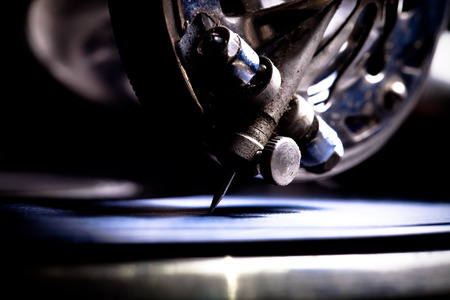1. Introduction to Suspension Upgrades
When it comes to improving your cars handling, upgrading the suspension system is one of the most effective modifications you can make. The suspension plays a critical role in how your vehicle responds to steering, braking, and road conditions. Whether youre looking for better cornering, a smoother ride, or improved stability, understanding the basics of suspension components is the first step.
What Is a Suspension System?
A suspension system is a combination of components designed to maximize a cars contact with the road while maintaining comfort and control. It absorbs bumps, reduces body roll, and helps keep your tires planted for optimal traction.
Main Components of a Suspension System
There are several key parts that make up a cars suspension system. Each of these components can be upgraded to improve handling and overall performance.
| Component | Function |
|---|---|
| Shock Absorbers (Shocks) | Control the movement of the suspension and reduce bouncing. |
| Struts | Combine the shock absorber and structural support for the suspension. |
| Springs | Support the vehicles weight and absorb impacts from the road. |
| Sway Bars | Reduce body roll when cornering for improved stability. |
| Control Arms | Connect the wheels to the frame, allowing movement and alignment adjustments. |
| Bushings | Cushion movement between suspension components to reduce noise and vibrations. |
How Suspension Upgrades Improve Handling
Upgrading suspension components can significantly enhance your car’s driving dynamics. Here’s how different upgrades impact performance:
1. Better Cornering
Upgraded shocks, struts, and sway bars help keep your car stable during turns, reducing body roll and improving control.
2. Improved Ride Quality
High-performance springs and shocks absorb road imperfections more effectively, leading to a smoother ride.
3. Enhanced Stability
Stronger control arms and bushings minimize unwanted movement, resulting in a more predictable and responsive driving experience.
4. Increased Traction
A well-tuned suspension helps keep your tires firmly in contact with the road, improving grip and reducing wheel hop.
Is a Suspension Upgrade Right for You?
Before upgrading your suspension, consider your driving style and goals. Are you looking for a sportier feel, better off-road capability, or just a more comfortable ride? Understanding what you want to achieve will help you choose the right parts for your car.
2. Choosing the Right Suspension Components
Upgrading your car’s suspension is one of the best ways to improve handling, ride comfort, and overall driving experience. However, with so many suspension components available, it’s important to choose the right ones for your needs. In this section, we’ll explore key suspension parts like coilovers, shocks, struts, and sway bars, and how they impact your car’s performance.
Coilovers: Adjustable Performance for Any Driving Style
Coilovers are one of the most popular suspension upgrades because they combine a shock absorber and a coil spring into a single unit. The biggest advantage of coilovers is adjustability; you can fine-tune ride height, damping, and stiffness to match your driving style.
Pros and Cons of Coilovers
| Pros | Cons |
|---|---|
| Adjustable ride height | More expensive than standard shocks |
| Improved handling and cornering | Can make the ride stiffer |
| Customizable damping and stiffness | Requires proper setup for best results |
Shocks and Struts: Essential for Ride Comfort and Stability
Shocks and struts control the movement of your car’s suspension system, ensuring a smooth and stable ride. While both serve similar functions, they have key differences:
Differences Between Shocks and Struts
| Component | Function |
|---|---|
| Shocks | Absorbs and dampens road impact |
| Struts | Acts as a structural part of the suspension |
| Shocks | Usually paired with separate coil springs |
| Struts | Integrates the coil spring in most cases |
Sway Bars: Reduce Body Roll for Better Cornering
Sway bars, also known as anti-roll bars, help reduce body roll when cornering by distributing weight more evenly between the left and right wheels. They connect the suspension on both sides of the car and work by resisting excessive movement.
How Sway Bars Improve Handling
- Reduces lateral movement when turning
- Improves cornering stability
- Enhances overall road grip and responsiveness
Which Suspension Components Are Right for You?
Choosing the right suspension components depends on your driving goals. Here’s a quick guide to help you decide:
| Driving Style | Recommended Suspension Upgrades |
|---|---|
| Daily Driving | Shocks and struts for comfort and stability |
| Spirited Driving | Coilovers for adjustable performance |
| Track or Performance Driving | Coilovers, performance shocks, and sway bars |
By selecting the right suspension components, you can dramatically enhance your car’s handling and driving experience. Whether you’re looking for a smooth ride for daily commuting or a stiffer, track-ready setup, understanding these components will help you make the right choice.

3. Lowering vs. Performance Tuning
Many car enthusiasts look to suspension upgrades to improve their vehicle’s handling, but there’s a big difference between lowering your car for looks and tuning your suspension for maximum performance. Understanding these differences can help you make the right choice for your driving style and goals.
Lowering for Aesthetics
Lowering a car is a popular modification to give it a sleek, aggressive stance. This is typically done using lowering springs, coilovers, or even air suspension. While a lower ride height can improve aerodynamics and center of gravity, simply lowering your car without proper suspension tuning can lead to poor handling, uneven tire wear, and a rough ride.
Performance Suspension Tuning
On the other hand, performance suspension tuning focuses on enhancing driving dynamics. This involves adjusting components such as dampers, sway bars, and alignment settings to achieve better cornering, stability, and responsiveness. The goal is to refine how the car handles under different driving conditions without sacrificing ride quality.
Key Differences
Here’s a breakdown of the main differences between lowering for aesthetics and tuning for performance:
| Aspect | Lowering for Aesthetics | Performance Suspension Tuning |
|---|---|---|
| Primary Goal | Improved appearance | Enhanced handling and performance |
| Common Methods | Lowering springs, air suspension | Upgraded shocks, adjustable dampers, sway bars |
| Ride Quality | May become stiffer and less comfortable | Optimized for both comfort and control |
| Handling Impact | Can sometimes worsen handling if not done correctly | Improves cornering and overall stability |
| Cost | Usually cheaper | Typically more expensive due to high-quality components |
Which One is Right for You?
If you’re primarily looking to enhance your car’s aesthetics and don’t mind sacrificing some ride comfort, a simple lowering setup might be enough. However, if you want to maximize your car’s performance, investing in a well-tuned suspension system is the best way to go. Consider your driving habits, budget, and goals before making a decision.
4. DIY vs. Professional Installation
Upgrading your suspension can significantly enhance your car’s handling, but deciding whether to do it yourself or hire a professional is an important choice. Each option has its advantages and challenges, depending on factors like difficulty, cost, and the tools required.
Difficulty Level
Suspension upgrades range from simple jobs like installing sway bars to more complex tasks such as replacing coilovers or adjusting suspension geometry. If you have mechanical experience, you might find it manageable. However, if youre unfamiliar with suspension components, professional installation may be the better choice.
Cost Comparison
DIY installation can save money, but only if you already have the necessary tools. Professional installation costs more upfront but ensures the job is done correctly. Consider the following cost breakdown:
| Installation Type | Estimated Cost |
|---|---|
| DIY Installation | $0 – $500 (depends on tools needed) |
| Professional Installation | $200 – $1,500 (varies by suspension type) |
Required Tools
Before starting a DIY suspension upgrade, ensure you have the right tools. Here’s a basic list of what you might need:
- Jack and jack stands
- Socket and wrench set
- Torque wrench
- Spring compressors (for coil spring setups)
- Alignment tools (for precision adjustments)
When to Choose Professional Installation
Professional installation is worth considering if:
- You’re upgrading to a complex suspension setup like air suspension or coilovers.
- You lack the necessary tools or experience.
- You want a precision alignment and tuned setup.
When DIY Might Be a Good Option
DIY installation could be a great choice if:
- You have prior mechanical experience.
- You’re installing simple upgrades like sway bars or shocks.
- You enjoy hands-on modifications and have access to the right tools.
No matter which option you choose, the key is ensuring that your suspension upgrade is installed safely and correctly for the best performance and handling improvements.
5. Five. Fine-Tuning and Maintenance
Once you’ve upgraded your suspension, proper fine-tuning and regular maintenance are essential to keep your car handling at its best. Adjusting your suspension allows you to dial in the perfect balance of comfort and performance, while regular upkeep ensures longevity and responsiveness.
Dialing in Your Suspension Settings
Fine-tuning your upgraded suspension helps maximize handling performance. Here are key suspension adjustments you can make:
| Adjustment | What It Does | How to Adjust |
|---|---|---|
| Ride Height | Lowers or raises the center of gravity, affecting stability and aerodynamics. | Adjust coilovers or lowering springs to achieve the desired height. |
| Camber | Changes the tilt of the wheels for better grip during cornering. | Use camber plates or adjustable control arms to tweak negative or positive camber. |
| Toe | Affects how the tires point inwards or outwards, influencing steering response. | Adjust tie rods to fine-tune toe-in or toe-out alignment. |
| Damping | Controls how quickly the suspension compresses and rebounds, affecting ride comfort and control. | Turn the shock absorbers adjusters to set softer or firmer damping. |
Regular Suspension Maintenance
Maintaining your suspension system ensures consistent performance and prevents premature wear. Follow these essential maintenance tasks:
Inspect for Wear and Tear
Regularly check your suspension components, including bushings, shocks, and control arms, for signs of wear such as cracks or leaks. Replace damaged parts immediately to avoid further issues.
Torque Suspension Bolts
Suspension bolts can loosen over time due to vibrations. Periodically check and tighten them to the manufacturer’s recommended torque specs.
Keep Components Clean
Dirt and debris can accumulate in suspension parts, affecting their movement. Clean coilovers, shocks, and bushings to ensure they operate smoothly.
Check Alignment Periodically
Whenever you adjust your suspension or notice uneven tire wear, it’s essential to get a professional wheel alignment to maintain stability and even tire wear.
By fine-tuning and maintaining your upgraded suspension, you can enjoy a smoother, more responsive driving experience while preserving the longevity of your components.

